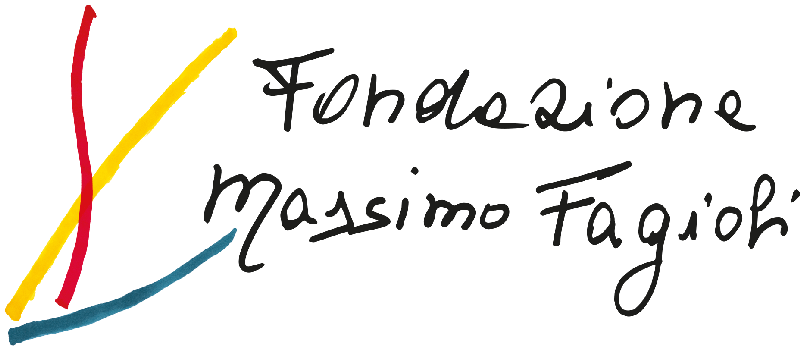Rationale: In our paper we provide an analysis of the “Death Instinct and Knowledge” exploring several psychiatricclinical situations. Thus, different psychiatric cases are brought to the reader’s attention, in which thedisappearance of the object and the arrival of the darkness is not only an instinctual occurrence in atheoretical sense, but a terribly tragic and experienced reality. “As part of the death instinct, the infantmakes, creates, darkness around itself.”(M.Fagioli). This Fagioli’s statement seems particularlyappropriate for our investigation.
Methods: Our analysis is a collection of cases reports that have been reinterpreted in the light of M. Fagioli’s theories. The first is about a woman who during the outbreak of the SARS-CoV-2 pandemic, made her sondisappear, driven by a delusional intuition. After the attempted murder, she hid him in the darkness of ananti-nuclear shelter. Afterwards, we discuss the case of a patient, whose confusion during a mysterious dormancy, proved to be fatal as it culminated in the suffocation of his little daughter. In this situation themother lives the conflict between life instinct and death instinct, finally ending in the darkness of postpartum depression.
Outcomes: The authors observe that the psychoanalytic concept of darkness, consisting in recovering the previousstate by undoing what one is, when reinterpreted through psychiatric clinical cases, might acquire a psychopathological value. Then the annulment drive is meant as a driving force, hidden by all changes consisting in the turning points of life, beginning with birth. Thanks to the neuroscience, the impact of thelight on the fetal retina, meant by Fagioli as the end of intrauterine darkness and the beginning of theintra psychic life, is a more tangible and understandable reality. In order to better understand the state of the art on fetal life, the authors took into consideration the contribution of a gynecologist.
Lessons: The theory of the “Death Instinct and Knowledge” attracts considerable interest in literature and the actual research span the fields of neuroscience. On the one hand, neuroscientific experiments indicate its accuracy; on the other hand, it is important to determine how this theory might engage modern clinical discussions, such as about its neuroethical aspects. We might speculate that if artificial intelligence totally replaces human intelligence within the next fifty years, then “Death Instinct” would perhaps lose its unconscious role, being substituted by a surrogate of numbers and symbols. Do we dare imaging analgorithm that would explain the function of the human psyche? If so, will it be possible and ethically acceptable?
Bibliography
- Fagioli, M. (2010). Istinto di morte e conoscenza. Roma: L’Asino d’oro Edizioni.
- Kraemer, M., Abrahamsson, M., & Sjöström, A. (1999). The neonatal development of the light flash visual evoked potential. Documenta ophthalmologica. Advances in ophthalmology, 99(1), 21–39. https://doi.org/10.1023/a:1002414803226
- Czakó, C., Kovács, T., Ungvari, Z., Csiszar, A., Yabluchanskiy, A., Conley, S., Csipo, T., Lipecz, A., Horváth, H., Sándor, G. L., István, L., Logan, T., Nagy, Z. Z., & Kovács, I. (2020). Retinal biomarkers for Alzheimer’s disease and vascular cognitive impairment and dementia (VCID): implication for early diagnosis and prognosis. GeroScience, 42(6), 1499–1525. https://doi.org/10.1007/s11357-020-00252-7
- Murray, A. J., Rogers, J. C., Katshu, M., Liddle, P. F., & Upthegrove, R. (2021). Oxidative Stress and the Pathophysiology and Symptom Profile of Schizophrenia Spectrum Disorders. Frontiers in psychiatry, 12, 703452. https://doi.org/10.3389/fpsyt.2021.703452
- McEwen B. S. (2007). Physiology and neurobiology of stress and adaptation: central role of the brain. Physiological reviews, 87(3), 873–904. https://doi.org/10.1152/physrev.00041.2006
- Maccari, S., Polese, D., Reynaert, M. L., Amici, T., Morley-Fletcher, S., & Fagioli, F. (2017). Early-life experiences and the development of adult diseases with a focus on mental illness: The Human Birth Theory. Neuroscience, 342, 232–251
- Nestler, E. J., Peña, C. J., Kundakovic, M., Mitchell, A., & Akbarian, S. (2016). Epigenetic Basis of Mental Illness. The Neuroscientist : a review journal bringing neurobiology, neurology and psychiatry, 22(5), 447–463. https://doi.org/10.1177/1073858415608147
- Pavlidis, E., Lloyd, R. O., & Boylan, G. B. (2017). EEG – A Valuable Biomarker of Brain Injury in Preterm Infants. Developmental neuroscience, 39(1-4), 23–35. https://doi.org/10.1159/000456659
- Gatti, M. G., Becucci, E., Fargnoli, F., Fagioli, M., Ådén, U., & Buonocore, G. (2012). Functional maturation of neocortex: a base of viability. The journal of maternal-fetal & neonatal medicine : the official journal of the European Association of Perinatal Medicine, the Federation of Asia and Oceania Perinatal Societies, the International Society of Perinatal Obstetricians, 25 Suppl 1, 101–103. https://doi.org/10.3109/14767058.2012.664351
- Lewis, C. R., & Olive, M. F. (2014). Early-life stress interactions with the epigenome: potential mechanisms driving vulnerability toward psychiatric illness. Behavioural pharmacology, 25(5-6), 341–351. https://doi.org/10.1097/FBP.0000000000000057
- Van den Bergh, B., van den Heuvel, M. I., Lahti, M., Braeken, M., de Rooij, S. R., Entringer, S., Hoyer, D., Roseboom, T., Räikkönen, K., King, S., & Schwab, M. (2020). Prenatal developmental origins of behavior and mental health: The influence of maternal stress in pregnancy. Neuroscience and biobehavioral reviews, 117, 26–64. https://doi.org/10.1016/j.neubiorev.2017.07.003
- Miguel, P. M., Pereira, L. O., Silveira, P. P., & Meaney, M. J. (2019). Early environmental influences on the development of children’s brain structure and function. Developmental medicine and child neurology, 61(10), 1127–1133. https://doi.org/10.1111/dmcn.14182
- Jantzi, C., & Perrin, A. (2021). Attempted altruistic infanticide in a context of psychotic decompensation induced by stress linked to the COVID-19pandemic: a case report. Forensic sciences research, 6(2), 148–151. https://doi.org/10.1080/20961790.2021.1923138
- Ienca M. (2019). Intelligenza2. Per un’unione di intelligenzanaturale e artificiale, Torino: Rosemberg & Sellier.
- Morewedge, C. K., & Kahneman, D. (2010). Associative processes in intuitive judgment. Trends in cognitive sciences, 14(10), 435–440. https://doi.org/10.1016/j.tics.2010.07.004
